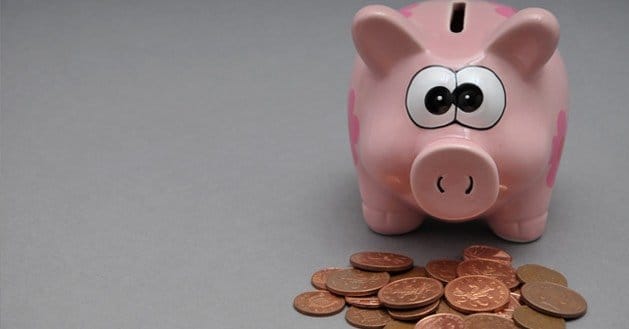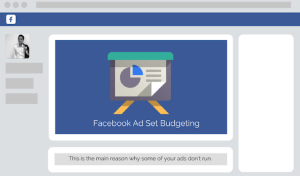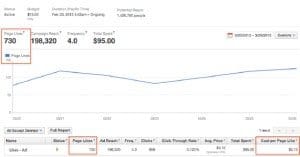 Written by ContentPowered.com
Written by ContentPowered.com
A lower CPC means every conversion has the potential to make you a significant ROI. If you sell a product for $2, but each click costs $1, you’re not getting a great ROI. If you’re selling a product for $1, but each click costs a penny, you can make a fantastic ROI. The holy grail, then, would be penny clicks; after all, no site is going to give you clicks any cheaper, because that means free clicks, and free doesn’t work.
So you have three questions to ask. First, is it possible to obtain 1 penny clicks? Second, if it’s possible, is it feasible? Third, is it valuable to do so? After all, if you’re getting penny clicks but it takes thousands of clicks to sell your $1 product, you’re not making money.
The Quest for Penny Clicks
The answer to question 1 is, in fact, yes. You can get penny clicks, and here’s how.
First, you need to be very specific in your targeting. By that, I mean that you need to have very broad demographics, but you simultaneously need to have very narrow interests. What does this mean?
- Your geographical targeting should be as broad as possible. At the minimum, you should target everyone in your country, possibly your continent. This of course is only valuable if your product can be bought from anywhere in that area. Therefore, you need to target the largest possible area in which you can sell products.
- You should only limit by language, not by race, age or other demographics. This is because unless your site and conversion funnel is multilingual, you still need to cater to the right language to get the conversions. Why not eliminate other demographics? Doing so will narrow your audience in a way that increases costs.
- Your interest targeting needs to be narrow but broad within its limited scope. For example, you should pick a niche, such as parenting, and then target as many different terms as you can within that narrow niche. The goal is to have as limited a scope of an audience as possible with as many people in it as possible More people = lower costs.
Second, you need to make your ad. You absolutely need to make an ad that converts, and there’s a reason for that beyond the desire to make a profit. That reason is Facebook itself. See, Facebook won’t let you go beneath a certain threshold of costs per click until you’ve proven that you know enough about their platform to make them money.
So, for a while, you’re going to be running an ad with a CPC above a penny. That’s alright! All you need to do is make a few conversions and make Facebook – and yourself – some money. This will prove to Facebook that you know what you’re doing, even if you’re doing it so you can game the costs system down the road.
To make sure your ad converts, you need to do a lot to optimize your copy and your image. If you’ve done Facebook ads before, you might have templates of past ads that work. If you haven’t, you’re going to have to do a little testing. Unfortunately, there’s no fast and easy way past this step; you just need to do some testing and experimentation, try out some variations and hope you strike on something that works.
Cost Reductions
At this point, you have ads with relatively cheap costs, but they aren’t the goal of the penny clicks you’re looking for. So, it’s time to make the ads better, make the clickthrough rates higher and decrease the costs of each click.
Wait, doesn’t it seem as though when your CTR is better, the ad is more valuable, and thus Facebook would charge more for it? Fortunately, no. Facebook is in it for the money, and if you’re running a successful ad, you’re going to keep running it and keep paying for it. Therefore, Facebook makes more money.
This is going to be a long and time-consuming process of iteration after iteration. Examine your Insights, examine your targeting, and refine your demographics to match what has the highest CTR. At this point, unfortunately, it’s all about the CTR, not about conversions. You might have more conversions off a lower CTR, but each conversion is going to take more clicks to reach. Your goal here is to get the highest possible CTR.
Test everything. Change your copy, change your image, change your targeting, keep iterating and keep dropping your price. You’re probably going to find a few things are true. Older users and very young users don’t click ads. Users particularly from certain countries – Egypt, Pakistan, etc – click far more often. As you refine your targets, you’re going to see a very specific kind of demographic come through.
Time For The Bad News
Once you’ve achieved penny clicks, you’re going to recognize the types of people who are clicking your ads, and you’re going to see something interesting has happened to your results. Can you guess what it is?
The answer will be people in the 20-40 age range, of both genders, typically labeling themselves as English-speaking and hailing from countries such as Egypt, Pakistan, India, Bangladesh, China, and Indonesia. In other words, click farms.
That’s right; you’ve more or less organically managed to put yourself on the radar of the people who sell their clicks for dozens on the penny, specifically to companies that want larger numbers on their metrics without concern for their bottom line. Companies and celebrities, businesses and interest groups, they all may end up with interest from these click farms.
The problem with click farms is that the people in these countries typically have very low incomes. When the average monthly income of a user in that country is $50, what possible interest do they have in your $200 subscription or your $100 product?
In the end, the problem is one of pursuing lower costs over higher returns. You have high click rates and incredibly low costs per click, but you’re not making any conversions from the clicks whatsoever. You may be paying a penny per click, but you’re just depositing that money into Facebook’s accounts without getting anything in return.
So, that answers questions 2 and 3. Is it feasible? Yes, with a lot of work, if you’re willing to go for it. Is it useful or valuable in any way? Signs point to no.


Michael B.
says:How long does it typically take to get down to a penny? I’ve been at this for a while and I’m not even in the single cent range yet. Please advise
Michael B.
says:How long does it typically take to get down to a penny? I’ve been at this for a while and I’m not even in the single cent range yet. Please advise
Ramesh Kumar
says:Wow amazing result for UK, USA, Australia 17 2015 June Total clicks : 22 27 2015 June Total Clicks : 159 Amazing result , It’s my experience Contact me Example Screen Shot